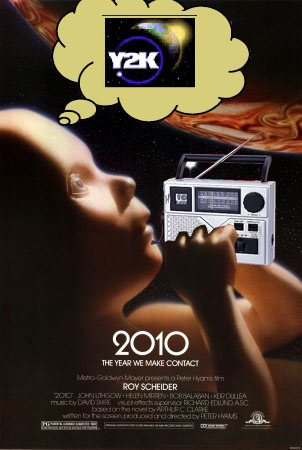June 12, 2009 is a day that will live on in broadcast history. That’s the day that the nation’s television broadcasters switched off their analog signals and went all-digital forever more. But does anyone remember January 7, 2003?
That was the date of the very first digital HD Radio broadcast, originating at Detroit FM station WDMK. However, it isn’t clear that there was anyone in Detroit who could hear the digital signal besides employees of Radio One, the station’s owner, or Ibquity, the developer of HD Radio. The first consumer HD Radio receiver was actually sold two days earlier in Cedar Rapids, Iowa, and there’s no indication that the buyer then drove to Detroit.
That this date isn’t so well remembered is indicative of the collective shrug HD Radio has received from the American listening public over it’s seven years on the air.
Renamed HD Radio from the technical name IBOC (standing for the method of its broadcast – In-Band On Channel), the digital radio broadcast system was launched with the promise of offering static-free digital sound with higher fidelity, along with added subchannels adding more feeds of news, talk or music. Unlike digital TV, HD Radio would accomplish right on the AM and FM bands, by squeezing in an additional digital signal alongside a station’s required analog program.
By all accounts HD Radio works, though many critical listeners question whether digital means better. In order to squeeze the digital signal into the analog station’s space on the band it has be highly compressed. While broadcasters like to call it “CD quality” the primary channels are often broadcast at pretty low bitrates, especially when they have to share bandwidth with extra subchannels.
Renaming the system HD Radio smacks of opportunism meant to latch onto the appeal of high-definition TV. For its part Ibquity claims that any resemblance to true high-definition is coincidental. In early whitepapers the HD was said to stand for “Hybrid Digital,” though that meaning has long been dropped.
The most significant criticisms leveled at HD radio result from interference concerns. The digital signal sits beside a station’s primary analog signal, which puts it closer to adjacent stations. This adjacency creates the potential for interference, especially since on an analog radio the digital signal sounds like a harsh digital hash rather than a competing audio program. In order to address this problem the digital signal is limited to broadcasting at only 1% the power of the primary analog carrier. However interference complaints continue. In 2007 these complaints gained some technical backup from a report in Radio World Engineering Extra which confirmed the invasion of digital “grunge” on adjacent stations, especially within a few miles of an HD transmitter.
Things are significantly worse on the AM dial. As any listener can attest, that band is already a stew of noise and interference. It only gets worse at night when signals travel hundreds of miles, bouncing off the ionosphere. So it seems logical that adding a digital sideband to AM stations would only make the band grungier. In fact, the situation is so bad that Citadel turned off HD on its AM stations in October 2007 amid rampant interference complaints.
Interference complaints might be just a footnote to this story if there were tens of millions of households currently enjoying HD radio. At this point there finally seems to be a ready supply of receivers and stations. Ibquity claims “2,000 HD Radio stations are on the air with 1,000 new FM multicast channels.” But how many listeners?
According to the latest research from Bridge Ratings, HD Radio reaches about 650,000 listeners nationwide. That’s about as many people as listen to the third highest rated FM station in Baltimore, MD, the nation’s #21 market. By comparison, the newly combined XM/Sirius satellite radio boasted nearly 19 million paying subscribers at the end of the third quarter this year.
Put another way, based on 2,000 HD stations, that’s an average of 325 listeners for each HD digital signal. If a station paid around $110,000 to make the digital upgrade like Washington public station WAMU did, then that’s about $338 per listener. At that rate, stations might as well start giving away HD Radios to maximize their investment.
It looks like the NAB put its hopes in HD Radio to improve the fortunes of broadcast radio, while the nation’s largest broadcasters let go of the reigns from their primary product: programming. Put simply: 4 more channels of voice-tracked homogenized crap still amounts to crap.
We might see some more interesting uses of HD Radio’s additional audio and data channels come from public broadcasters, which have also–somewhat cautiously–embraced the technology. But I don’t think that adds up to an enormous mass-appeal audience. HD Radio might not become the next AM stereo, but it doesn’t even yet look like satellite radio, either. Without some massive investments in improving programming and reinvigorating local service, it certainly won’t be the technology that turns around commercial broadcasting.
Further reading: Radio researcher John Anderson is writing his Ph.D. dissertation on HD Radio. Keep up with his newest findings at DIYMedia.net



